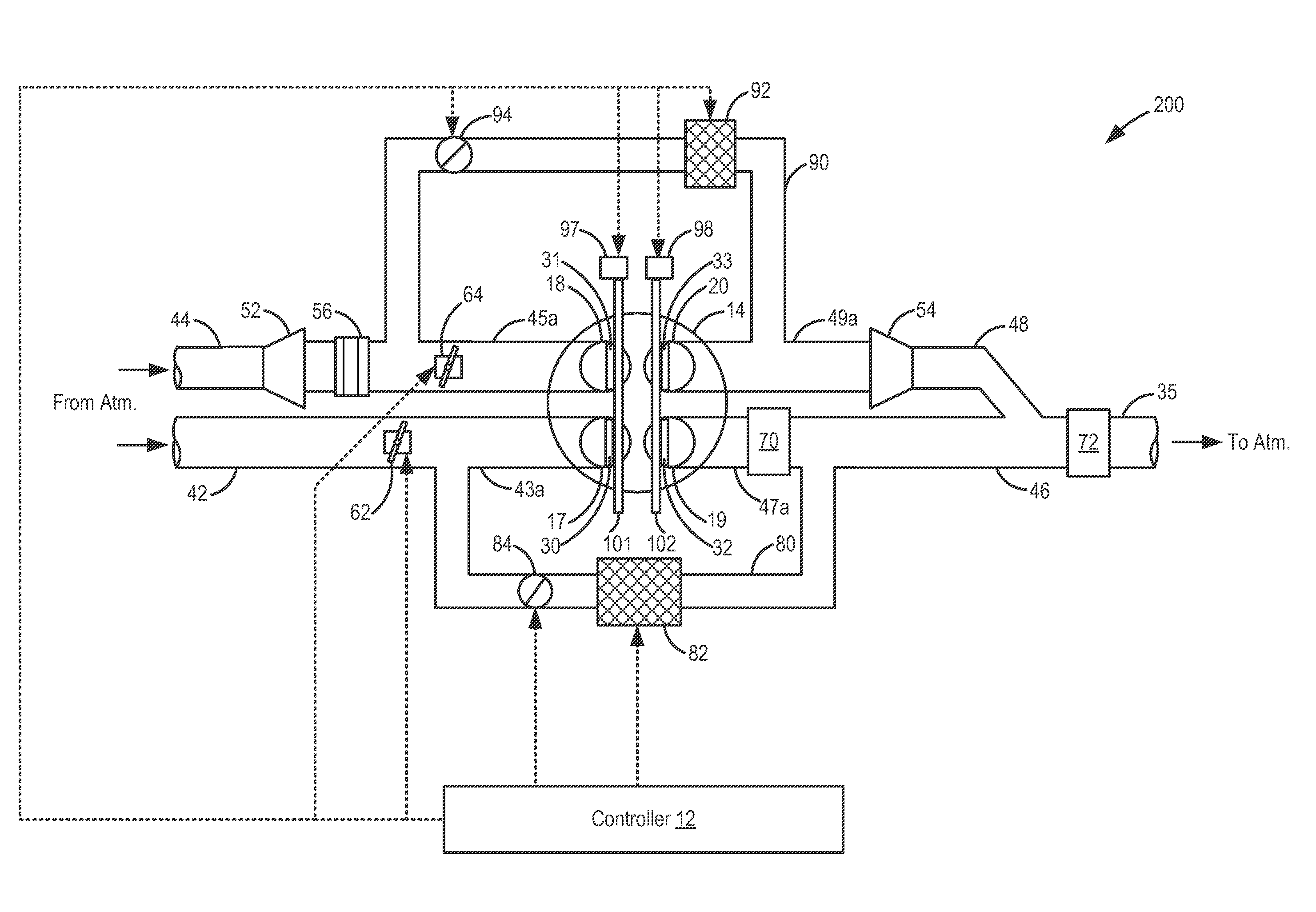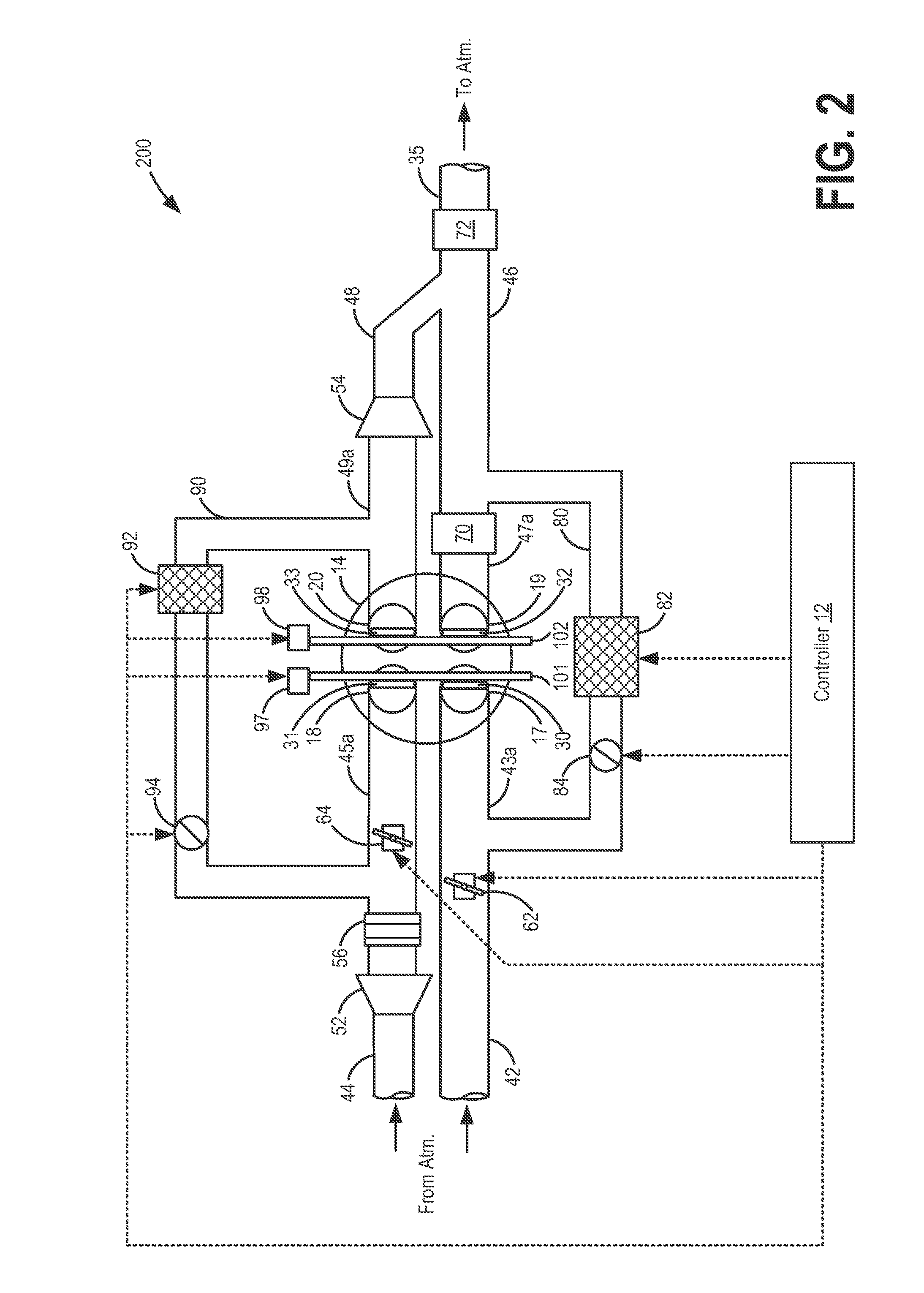Method and system for a turbocharged engine
- Summary
- Abstract
- Description
- Claims
- Application Information
AI Technical Summary
Benefits of technology
Problems solved by technology
Method used
Image
Examples
Embodiment Construction
[0020]The following description relates to systems and methods for controlling an engine, such as the engine system of FIGS. 1-3, by providing aircharge of differing pressure and / or differing composition (e.g., different fresh air to EGR ratios) to an engine cylinder through distinct intake passages at different times in an engine cycle. Specifically, an intake aircharge at or below barometric pressure can be provided to the cylinder separate from an intake aircharge at compressor pressure. Likewise, an intake aircharge including recirculated exhaust gas can be provided to the cylinder separate from an intake aircharge having fresh air. Still other combinations may be possible, as elaborated in FIG. 6. An engine controller may be configured to perform a control routine, such as the routine of FIG. 4, to open a first cylinder intake valve at an earlier timing than a second cylinder intake valve (FIG. 5), thereby providing a first aircharge of a first composition at a different time i...
PUM
 Login to View More
Login to View More Abstract
Description
Claims
Application Information
 Login to View More
Login to View More - R&D
- Intellectual Property
- Life Sciences
- Materials
- Tech Scout
- Unparalleled Data Quality
- Higher Quality Content
- 60% Fewer Hallucinations
Browse by: Latest US Patents, China's latest patents, Technical Efficacy Thesaurus, Application Domain, Technology Topic, Popular Technical Reports.
© 2025 PatSnap. All rights reserved.Legal|Privacy policy|Modern Slavery Act Transparency Statement|Sitemap|About US| Contact US: help@patsnap.com



